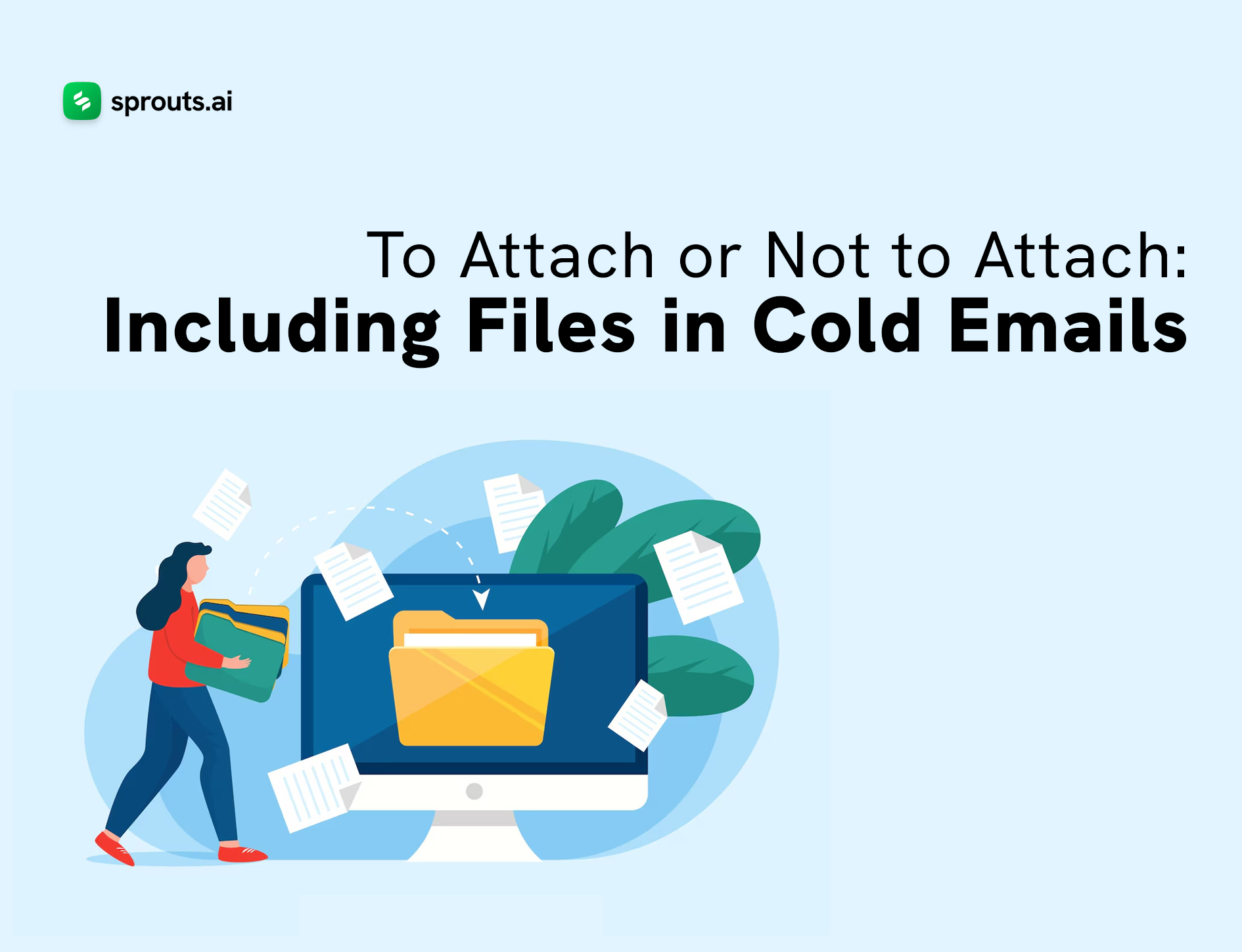Ever crafted the perfect cold email, only to hesitate when it comes to adding attachments? You’re not alone. This blog goes deep into the debate of attaching files to cold emails, exploring the pros and cons to help you decide what’s best for your outreach strategy.
The Case for Attachments
Attachments can serve as powerful tools to supplement the content of your cold email. Here are some reasons why you might consider including attachments:
- Provide Additional Information: Sometimes, the content you want to share simply cannot be adequately expressed within the confines of an email body. Whether it’s a detailed proposal, a portfolio of work samples, or a product brochure, attachments allow you to convey information more comprehensively.
- Visual Appeal: Visual elements such as graphs, charts, or images can enhance the appeal of your message and make it more engaging for the recipient. A well-designed presentation or infographic can capture attention and convey complex ideas more effectively than plain text.
- Demonstrate Credibility: Including relevant documents or case studies can bolster your credibility and demonstrate your expertise on the subject matter. It shows that you’ve done your homework and are serious about providing value to the recipient.
- Call to Action: Attachments can serve as a clear call to action for the recipient. Whether it’s requesting feedback on a proposal, scheduling a demo, or reviewing a document, attachments can prompt specific actions and facilitate further engagement.
The Case Against Attachments
While attachments offer benefits, they also come with drawbacks that may deter recipients from engaging with your email. Here are some reasons why you might opt to avoid attachments:
- Risk of Being Perceived as Spam: In an age where phishing attacks and malware-laden emails abound, recipients are often wary of opening attachments from unknown senders. Including attachments in your cold emails may raise red flags and lead recipients to perceive your email as spam or malicious.
- Increased Friction: Opening an attachment requires extra effort on the part of the recipient. In today’s fast-paced digital environment, where attention spans are short and inboxes are overflowing, any additional friction in the communication process can decrease the likelihood of a response.
- Compatibility Issues: Not all recipients may be able to open or view the attachments you send. Differences in software, operating systems, and email clients can lead to compatibility issues, causing frustration for recipients and potentially hindering communication.
- Loss of Control: Once you hit send, you lose control over how your attachment is perceived and used. There’s always the risk that your document may be forwarded to unintended recipients, shared without proper context, or even ignored altogether.
Best Practices for Including Attachments in Cold Emails
If you decide to include attachments in your cold emails, here are some best practices to maximize their effectiveness:
- Keep it Relevant: Only include attachments that are directly relevant to the recipient and align with the purpose of your email. Avoid bombarding recipients with unnecessary or extraneous documents.
- Optimize File Size: Keep your attachments as small as possible to minimize loading times and reduce the likelihood of compatibility issues. Compress images, use efficient file formats, and consider hosting larger files on cloud storage platforms with download links instead.
- Provide Context: In the body of your email, provide a summary or explanation of the attachment to give recipients context and incentivize them to open it. Clearly articulate the value proposition and explain how the attachment relates to their interests or needs.
- Follow Up: If you include an attachment in your initial email, be sure to follow up with a polite reminder or clarification if you don’t receive a response. Avoid being pushy or overly persistent, but demonstrate a genuine interest in furthering the conversation.
The decision of whether to include attachments in cold emails ultimately depends on your specific goals, audience, and context. While attachments can be valuable tools for providing additional information, demonstrating credibility, and prompting specific actions, they also carry risks such as being perceived as spam, increasing friction, and encountering compatibility issues.
Before attaching files to your cold emails, carefully consider whether the benefits outweigh the potential drawbacks and whether there are alternative ways to achieve your objectives. By following best practices, providing relevant content, and respecting the preferences of your recipients, you can effectively leverage attachments to enhance the impact of your cold email outreach.

